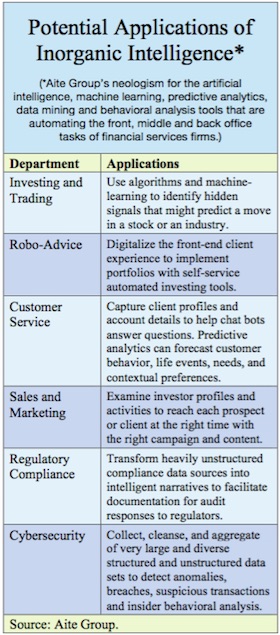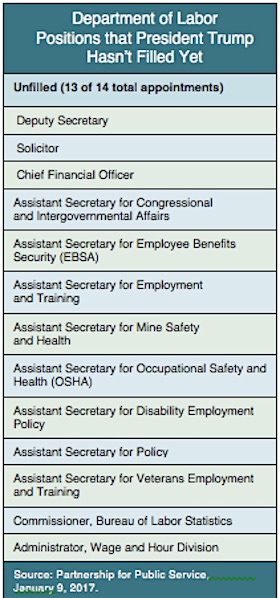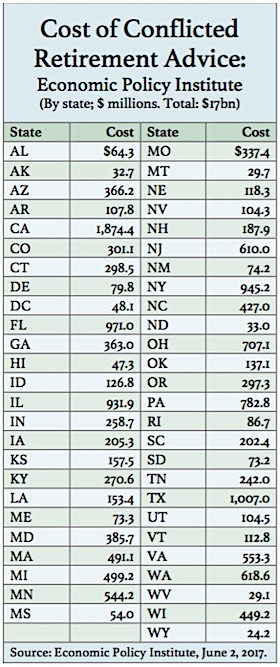Accenture transfers pension risk to American General and Mass Mutual
Accenture has completed the termination of its U.S. Pension Plan, announced in March 2016, by agreeing to transfer pension assets and about $1.0 billion in outstanding pension obligations to American General Life Insurance Company (AGL), a unit of AIG, and to MassMutual.
The insurers will provide annuities to Accenture retirees. The annuity settlement is part of Accenture’s three-step strategy to reduce its pension obligations:
Plan Termination: The Plan’s termination removed $1.6 billion of pension obligations, including about $600 million through lump-sum payments to approximately 7,000 active and former U.S. employees who elected to receive such payments, and $1.0 billion through the purchase of annuities from insurance companies.
Annuity Purchase: Accenture purchased group annuity contracts from AGL and MassMutual, which are each responsible for assuming a portion of the obligation to make future annuity payments to approximately 9,200 active and former U.S. Accenture employees and their beneficiaries. The transaction closed in late May and the insurers will assume payment responsibility in August 2017.
New Pension Plan: Accenture has created a new, fully funded, defined benefit plan with approximately $200 million of pension obligations with substantially the same terms as the Plan for approximately 550 active U.S. employees who remain eligible to accrue benefits.
Designated Plan fiduciaries selected AGL and MassMutual as the annuity providers. The selection was made in consultation with independent experts after a thorough annuity provider search and due diligence process, and in accordance with the U.S. Department of Labor’s “safest available annuity” standards. Key advisors to Accenture included Mercer (US) Inc. as lead strategic and annuity placement advisor.
Affected participants will soon receive letters with further details, an Accenture release said.
Envestnet | Retirement Solutions passes $25 billion under advisement
Envestnet | Retirement Solutions (ERS), which offers a customized, portable 3(21) and 3(38) outsourced fiduciary service called Envestnet Fiduciary Advantage, has reached a milestone in assets under advisement, the Chicago-based asset management platform provider announced this week.
As of March 31, 2017, ERS supports $25.89 billion in assets under advisement from 13,390 plans—representing a 7.5% growth in assets under advisement, and a 19% increase in plans, quarter over quarter.
ERS also announced that T. Rowe Price Retirement Plan Services, Inc., has begun offering access to Envestnet Fiduciary Advantage to plan sponsor advisors.
Envestnet Fiduciary Advantage provides:
- Investment allocation recommendations with corresponding research reports.
- Ongoing investment monitoring.
- Quarterly monitoring reports.
ERS utilizes Envestnet’s proprietary ERS SCORE Methodology to evaluate and monitor potential investments for retirement plans. The method seeks out portfolio managers that have demonstrated consistent risk control, an efficient risk-return profile, stability, and a reasonable fee structure.
More T. Rowe Price retirement plans offer Roth option
Among employer-sponsored retirement plans where T. Rowe Price Retirement Plan Services is the recordkeeper, 61% offer Roth contributions in their 401(k) plans, up from 50% at the end of 2015, according to a T. Rowe Price release this week.
This leap represented the largest one-year increase in the Roth contribution adoption rate since T. Rowe Price first tracked the data in 2007.
The new finding comes from the 2016 update of Reference Point, an annual benchmarking report by T. Rowe Price of employer-sponsored retirement plans based on the firm’s full-service recordkeeping client data.
troweprice.com/referencepoint.
Of the T. Rowe Price plan participant base:
- The number of plans with a 6% default deferral rate or more has doubled since 2011, with 33% of plans offering this higher rate in 2016. The industry standard for the past 10 years has been 3%.
- The percentage of plans adopting auto-increase of participant contributions and auto-enrollment has grown from 63.3% in 2011 to 71.5% in 2016. Similarly, auto-enrollment increased from 39.8% in 2011 to 54.5% in 2016.
- Participation rates continue to be strongly tied to the adoption of auto-enrollment, with participation 42 percentage points higher in plans with auto-enrollment than those without it.
Contribution trends
Pretax deferral rates now stand at 8%, the highest rate since before the financial crisis, thanks to plan sponsors raising the default deferral rate for their plans and improved market conditions.
Adoption of target date portfolios continued to rise. In 2016, 93% of plans at T. Rowe Price offered target date portfolios and 55% of participants invested their entire account balance in target date products, up nine percentage points since 2013.
The increasing popularity of target date products could indicate that participants actively prefer a more managed approach or that they simply using their plan’s default option, the T. Rowe Price release said.
The percentage of participants with loans at the end of 2016 was 23.8%, its the lowest point since early 2009.
T. Rowe Price also found that as of year-end 2016:
- The ratio of direct rollovers to cash-outs continued to strengthen, with rollovers increasing to 81% in 2016, compared with 71% in 2009, and cash-outs decreasing to 19% in 2016, compared with 29% in 2009.
- Hardship withdrawals declined, with only 1.4% of participants in T. Rowe Price plans taking such a withdrawal, compared with the 2% industry average.
“The percentage of participants taking out a loan is down slightly and is at its lowest since 2009. We also saw a strengthening ratio of rollovers to cash-outs,” said Aimee DeCamillo, head of T. Rowe Price Retirement Plan Services, Inc., in a release. “We believe that educating participants on their retirement savings plan has had a direct, positive effect on reducing plan leakage.”
Survey methodology
Data are based on the large-market, full-service recordkeeping universe of T. Rowe Price Retirement Plan Services, Inc. retirement plans (401(k) and 457 plans), consisting of 642 plans and over 1.6 million participants.
Data and analysis cover the time periods spanning calendar years ended December 31, 2007, through December 31, 2016. Auto-increase and auto-enrollment data are based on plans that are eligible to receive this service. Loan availability and usage results are based on active participants with outstanding balances.
‘Fintech’ has arrived, EY survey shows
Financial technology, aka “fintech,” adoption among consumers has surged over the past 18 months and is becoming mainstream, according to the latest EY FinTech Adoption Index. An average of 33% of digitally active consumers across the 20 markets in the Ernst & Young now use financial technologies.
Adoption in the US has doubled to 33% since the 2015 FinTech Adoption Index report. The US has the highest adoption rates of three of the top five fintech categories: financial planning tools, savings and investments, and borrowing.
“This adoption will likely increase with the next evolution of FinTechs, focused on data sharing, open APIs (application programming interfaces), biometrics, and application of artificial intelligence and robotics,” said Matt Hatch, Partner, Ernst & Young LLP and the EY Americas FinTech Leader, in a release.
The study was based on more than 22,000 online interviews of digitally active consumers across 20 markets. Emerging markets are driving much of the adoption, with China, India, South Africa, Brazil and Mexico averaging 46%.
The EY FinTech Adoption Index identifies five categories of fintech services:
- Money transfers and payment services
- Financial planning tools
- Savings and investments
- Borrowing
- Insurance
Money transfers and payment services are the most popular, with adoption at 50% in 2017 and 88% of consumers expecting to adopt in the future. The current adoption rate among US consumers is slightly higher at 52%. Online digital-only banks and mobile phone payments at checkout are the most popular services.
Insurance has also made huge gains, moving from one of the least commonly used fintech services in 2015 to the second most popular in 2017, rising to 24% globally. This has largely been because of the expansion into technologies such as telematics and wearables (helping companies to better predict claim probability) and in particular the inclusion and growth of premium comparison sites in the study. The US insurance fintech adoption rate is 20%.
Forty percent of fintech users regularly use on-demand services (e.g. food delivery), while 44% regularly participate in the sharing economy (e.g. car sharing). By contrast, only 11% of non-fintech users use either of these services on a regular basis.
In the US, the adoption rate is 35% for men and 28% for women. Millennials (25- to 34-year olds) have the highest adoption rate, followed by 35- to 44-year-olds. The adoption rate for Millennials in the US is 59% compared with the global average of 48%. The two rates for the 35- to 44-year-old age group are 50% and 41%, respectively.
Adoption is also growing among the older generations: 40% of digitally active 45-64 year olds and 17% of those 65 and older regularly use fintech services in the US. Money transfer and payments are the most adopted services across all age groups in the country.
The EY FinTech Adoption Index finds that fintech adoption is set to increase in all 20 markets. Based on consumers’ intention of future use, FinTech adoption could increase to an average of 52% globally. US adoption is expected to hit 46% in the near future.
Are participants thinking “fast” or “slow”? Voya wants to know
Voya Financial has launched “Retirement Check-Up Report,” a resource that allows employers to measure the health of their retirement plans based on the digital enrollment and savings decisions participants make online and through their mobile devices.
The Retirement Check-Up Report leverages recent findings from Voya’s Behavioral Finance Institute for Innovation, a research initiative that “merges behavioral science with the speed and scale of the digital world to create large-scale solutions that are designed to help improve individual retirement outcomes,” according to a Voya release.
The Retirement Check-Up Report follows a previous Voya whitepaper, “Using Decision Styles to Improve Financial Outcomes – Why Every Plan Needs a Retirement Check-Up,” by Shlomo Benartzi, Ph.D., a UCLA Anderson School of Management professor and a senior academic advisor to Voya’s Behavioral Finance Institute for Innovation.
“For the first time, employers can measure whether or not participants are engaging in a reflective thought process when making important decisions about their retirement plan,” Benartzi said in a release.
By looking at the digital behaviors that lead to certain savings rates and investment choices, employers will be able to see if they need to create a plan re-enrollment strategy, for instance.
The whitepaper examined how people make decisions using two different styles — “instinctive” (quick and without much thought) and “reflective” (slow and deliberate). Applying this to the digital environment, Voya was able to study and categorize the decision styles of retirement plans. A scoring system (the “Reflection Index”) was developed after observing whether or not:
- Participants paid attention online
- Participants gathered additional information
- Participants made any trade-offs
Through this research, Voya found a significant correlation between a plan’s Reflection Index score and the average projected retirement income of its participants. A plan that had more instinctive decision-making participants was far more likely to have lower aggregated projected replacement income (below a 70% goal). Voya’s analysis found 90% of plans were “off track” in terms of projected income and were categorized as being “instinctive” due to their participants’ digital decision-making styles.
Other research has shown many individuals don’t take action to change their savings rates or re-balance their accounts once they enroll in a plan. The new Check-Up Report can serve as a tool to help plans learn when to “course correct” and consider plan re-enrollment.
For thousands of Voya plan sponsors and the millions of participants they represent, Voya can create a unique Check-Up Report score report that lets an employer measure whether its plan, in the aggregate, is instinctive or reflective based on the digital activity of its participants.
Voya data from 428 plans with more than 25 participants. Participants with an annual salary below $20,000 or projected income replacement above 200% were excluded. Plans with an average Reflection Index below/above 2.0 (out of 3.0) are categorized as “Instinctive Decisions” / “Reflective Decisions.” In addition, plans with an average income replacement below/above 70% are categorized as “Not on Track” / “On Track.”
Details on the three dimensions are as follows:
- Attention – did they log into the website or mobile app within past year?
- Information gathering – did they click on projected retirement income to learn more?
- Making trade-offs – did they explore different savings rates, retirement age or rates of return?
One working paper study found that more than 70% of participants had not re-balanced their accounts during a ten-year period and nearly 50% had not changed the allocation of their contributions: “How Do Household Portfolio Shares Vary with Age?” (John Ameriks and Stephen P. Zeldes, September 2004, Columbia University). A Voya study of approximately 60,800 auto-enrollees between 2014 and 2016 found only about 5,500 (9%) made a fund change since being auto-enrolled.
Certain data is needed to produce a Reflection Index report. Plans must have at least a 12-month history with Voya based on one of the Index dimensions, and also must have more than 25 employees in plan with salary data. They must also have myOrangeMoney participant website functionality turned on to measure digital engagement.
Surprisingly, most investors prefer protection over growth: Cerulli
New research from Cerulli Associates, a global research and consulting firm, finds that when asked about their actual financial goals, U.S. investors are considerably more interested in risk reduction and protection than in aggressive portfolio growth.
“When asked directly whether they would prefer ‘to protect their portfolios from significant losses, even if it means periods of underperforming the market,’ 77% of respondents indicate that they would prefer the safer route,” said Scott Smith, director at Cerulli, in a release.
“After discussing investors’ portfolios with platform providers and advisors, there is a consistent fear of looming client defections resulting from performance that lags a benchmark, or index,” Smith. “But actual instances of this situation remain far more the outliers than regular occurrences.” Investors are far more concerned with whether they will be okay financially than whether their managers provided a few basis points of alpha.
Of course, the two are related, but in an extended bull market run, the industry has largely focused product development and implementation more on growth than protection.
“Further confounding financial professionals is that the preference for portfolio protection is cited by more than 80% of investors under age 40, an age bracket where most providers assume investors are most willing and able to accept portfolio risk,” Smith said. In short, providers must consider each investor’s goals and concerns before trying to optimize their portfolios.
Cerulli’s latest report, U.S. Retail Investor Products and Platforms 2017: Retooling for the Modern Investor, is designed to focus on retail investors’ product use, preferences, and awareness. This report gives attention to channels through which investors purchase products, the age and asset levels of investors who purchase various products, and other key investor profiles.
© 2017 RIJ Publishing LLC. All rights reserved.












